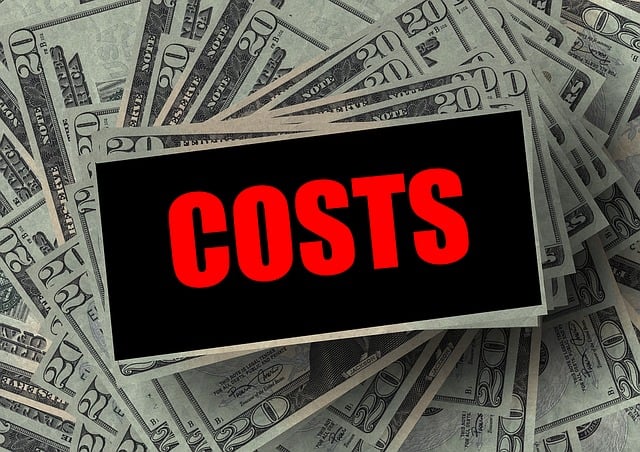Semaglutide, a GLP-1 receptor agonist, has revolutionized diabetes management but faces accessibility challenges due to its high cost. Growing global demand, driven by its dual efficacy in treating type 2 diabetes and obesity, has transformed the drug's supply chain. Regional pricing dynamics vary significantly; North America experiences stable prices with patent protections, while Europe faces volatility. Emerging markets are seeing competitive affordable pricing strategies. Predicting semaglutide's future price requires analyzing market demand, production costs, regulatory environments, and generic competition. Initially high prices may stabilize or decrease as patents expire and generics enter the market, enhancing cost-effectiveness for long-term health management. Strategies regarding pricing models and reimbursement are crucial to ensure accessibility for all patients.
“Semaglutide, a groundbreaking Glucagon-Like Peptide-1 Receptor Agonist (GLP-1RA), has transformed diabetes management. This article explores the evolving market landscape and future price predictions for semaglutide. We delve into its current cost dynamics, global demand drivers, regional pricing trends, and factors shaping its cost trajectories. Understanding the impact of patent expirations and generic competition is crucial, as it may disrupt the market and influence accessibility. By analyzing these aspects, we provide insights into navigating the fluctuating cost of semaglutide in a dynamic pharmaceutical environment.”
Understanding Semaglutide: A Glucagon-Like Peptide-1 Receptor Agonist

Semaglutide, a glucagon-like peptide-1 (GLP-1) receptor agonist, has gained significant attention in the medical and pharmaceutical industries. This drug plays a pivotal role in managing type 2 diabetes by mimicking the effects of natural GLP-1 hormones, which stimulate insulin production and inhibit glucagon release. Its mechanism of action not only helps lower blood sugar levels but also promotes weight loss, making it a versatile treatment option.
The cost of semaglutide has been a topic of interest for both healthcare providers and patients. As with many specialized medications, the price point can be high, influencing accessibility and patient adherence to treatment plans. However, ongoing research and competition in the pharmaceutical market have driven innovations, potentially leading to more affordable versions in the future. Understanding the drug’s role and its economic considerations is essential when predicting market trends and gauging future price predictions for semaglutide.
Current Market Dynamics: Cost of Semaglutide and Its Impact on Accessibility

The current market dynamics for semaglutide are shaped by its increasing demand and the ongoing challenges related to its high cost. As a relatively new drug, semaglutide has quickly gained recognition for its effective management of type 2 diabetes and weight loss, leading to a surge in prescription rates. However, this popularity comes with a price—literally. The cost of semaglutide has been a significant barrier to accessibility, especially for patients with limited financial resources.
The high cost is attributed to the complex manufacturing process and ongoing research, which drives up production costs. This expense often translates into higher insurance copays and out-of-pocket expenses for patients, making it less accessible. As a result, many healthcare providers advocate for alternative treatments or dosage adjustments to manage patient budgets while ensuring adequate diabetes care.
Global Demand and Supply Chain Analysis

The global demand for semaglutide has been steadily rising due to its growing use in diabetes management and recent approval for additional indications. As a result, the supply chain for this drug has undergone significant adjustments to meet the increasing needs of healthcare providers worldwide. The complex manufacturing process involves several key components, each requiring meticulous attention to ensure consistent quality and availability.
Analyzing the cost of semaglutide is crucial in understanding market dynamics. Fluctuations in raw material prices, production costs, and distribution channels all factor into the final retail price. Additionally, patent expirations and generic competition can significantly impact pricing strategies, making it a dynamic area for pharmaceutical companies to navigate.
Recent Trends in Semaglutide Pricing: A Regional Perspective

In recent years, the cost of semaglutide has been a topic of significant interest in the pharmaceutical industry and healthcare markets globally. Semaglutide, a glucagon-like peptide-1 (GLP-1) receptor agonist, has gained prominence due to its dual role in treating both type 2 diabetes and obesity. This dual benefit has led to increased demand and, consequently, fluctuations in pricing across various regions.
Regional trends reveal varying cost structures for semaglutide. In North America, the price of semaglutide has been relatively stable, with a slight upward trend due to patent protection and competitive dynamics. Conversely, European markets have experienced more volatile pricing, influenced by regulatory approvals, local healthcare policies, and negotiations between manufacturers and payers. Emerging markets, such as Asia-Pacific regions, are witnessing a surge in semaglutide availability and affordable pricing strategies as companies aim to capture new patient segments and compete with generics. These regional variations highlight the complex factors shaping the cost of semaglutide and its accessibility to patients worldwide.
Predicting Future Prices: Factors Influencing Semaglutide Cost Trajectories

Predicting future prices for semaglutide involves considering a multitude of factors that influence its cost trajectories. These include market demand, production costs, regulatory landscapes, and competitive dynamics within the pharmaceutical industry. As the demand for semaglutide continues to grow due to its expanding medical applications, particularly in diabetes management and weight loss therapies, pricing models are expected to evolve.
Regulatory approvals, patent expirations, and the emergence of generic versions play a significant role in determining the cost of semaglutide. Innovative drug manufacturers may initially set high prices to recover R&D investments, but as competition intensifies, prices could stabilize or even decrease over time. Market analysis also reveals that regional variations in healthcare policies, reimbursement rates, and patient demographics can significantly impact the accessibility and affordability of semaglutide, further complicating price predictions.
The Role of Patent Expiration and Generic Entry

The pharmaceutical industry’s dynamic nature is greatly influenced by patent expirations and the subsequent entry of generic medications, which can significantly impact drug prices, including semaglutide. When a brand-name drug like semaglutide enters the market, it enjoys exclusive rights to sell and distribute its product, often leading to higher pricing due to limited competition. However, once these patents expire, generic versions can enter the market, driving down costs for consumers. This is particularly relevant for semaglutide, a widely prescribed diabetes treatment, as its cost-effectiveness has been a topic of interest for patients and healthcare providers.
With generic competitors entering the scene, the cost of semaglutide is expected to decrease steadily. This trend can be beneficial for patients requiring long-term treatments, as it makes medications more accessible and affordable. The entry of generics often leads to price wars, encouraging further reductions in prices to gain market share. As a result, consumers can anticipate more affordable options for managing their health conditions, such as diabetes, in the future.
Potential Market Disruptions and Opportunities for Patients and Providers

The introduction of semaglutide, a novel glucagon-like peptide-1 (GLP-1) receptor agonist, has shaken up the diabetes treatment landscape. Its rapid rise in popularity and growing market share present both opportunities and challenges for patients and healthcare providers alike. One significant disruption is the potential to improve patient adherence due to its once-weekly administration, contrasting the daily injections typical of previous GLP-1 therapies. This could lead to better glycemic control and improved quality of life for diabetics.
Moreover, semaglutide’s demonstrated efficacy in weight management offers an exciting opportunity to combat the rising obesity epidemic. However, concerns about the cost of semaglutide remain. High medication prices can pose a barrier to access, especially for uninsured or underinsured patients. Healthcare providers face the challenge of balancing the benefits of this innovative treatment with budgetary constraints, potentially leading to discussions around pricing models and reimbursement strategies.
Conclusion: Navigating the Cost of Semaglutide in a Dynamic Pharmaceutical Landscape

In the dynamic pharmaceutical landscape, understanding the cost of semaglutide is pivotal as we peer into its future market trends and price predictions. The pricing of semi-glutide has been a subject of interest due to its groundbreaking role in diabetes management. As with any innovative treatment, factors such as research and development costs, manufacturing complexities, and competitive landscape influence the final cost to patients.
Navigating these complexities reveals a promising yet nuanced picture. While semaglutide’s initial market entry was marked by high prices reflecting its cutting-edge technology, trends suggest room for evolution in pricing strategies. The competitive introduction of generic alternatives promises to make this medication more accessible, potentially reducing the cost of care for patients with diabetes globally.
